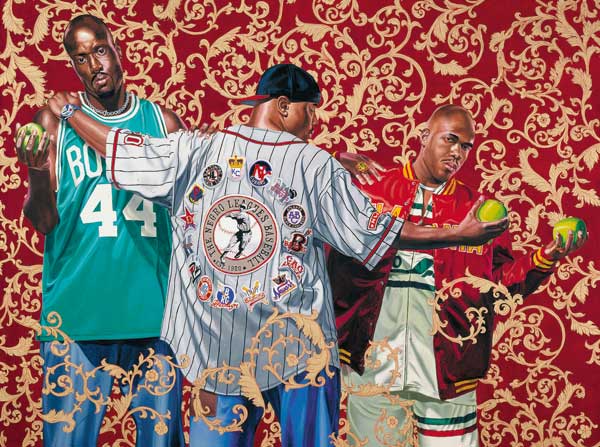Conceptual art tends to be mostly installations. The ideas behind the works are more important and eventually become the structure itself. This makes Kapoors work conceptual art as his works are very much idea focused and the results of them are breath taking.
"In conceptual art the idea or concept is the most important aspect of the work. When an artist uses a conceptual form of art, it means that all of the planning and decisions are made beforehand and the execution is a perfunctory affair. The idea becomes a machine that makes the art". (Sol LeWitt)
2. Research 3 quite different works by Kapoor from countries outside New Zealand to discuss the ideas behind the work. Include images of each work on your blog.
Leviathan, by artist Anish Kapoor was a 35m high instillation in Paris. The structure was an act of protest against artist Ai Weiwei being put in prison. The giant structure was made from PVC that was stretched over a metal frame. You could also explore these majestic structures from the inside. The colours and sheer scale created their own unique space, which added to the overall viewing experience.
Kapoor said: "My ambition is to create a space within a space, responding to the great height and light of the nave of the Grand Palais.People will be invited to enter the artwor to immerse themselves in its colour and it will be I hope a contemplative, poetic experience."
 |
| Leviathan, by British artist Anish Kapoor, Paris |
 |
| Leviathan, by British artist Anish Kapoor, Paris |
 |
| Inside the Leviathan |
Memory is an instillation piece made from "a twenty-four-ton, Cor-Ten steel tank". This work is a great example of using space to enhance the impact of the installation. The rich colours and segments make this pod intriguing. Enticing you to explore the work and the space its created. It reminds me of an acorn due to its colour and form or perhaps a capsule or alien pod. "Kapoor’s use of Cor-Ten steel and its inherent color properties relate the commission back to his early pigment sculptures". As you can see in the third photo of 'Memory' you can also view the inside of the steel pod that is morphed to the side of the wall. Kapoor creates these space defied pieces that not only appeal to the eye but also evoke the mind. Being able to view the work from the inside out allows viewers to appreciate the work by interacting with the space.
"We not only have more to see, but have to exert more effort in the act of seeing. Kapoor describes this process as creating “mental sculpture.”
 |
| Memory, 2008 Installation shot, Deutsche Guggenheim |
 |
| Memory, 2008 Installation shot, Deutsche Guggenheim |
 |
| Memory, 2008 Installation shot, Deutsche Guggenheim |
The Instillation piece 'Shooting Into The Corner' is a motion work involving a cannon and red wax. "an iron canon (left) shoots sticky splodges of red wax across a room repetitively every 20 minutes, also illustrates the “looking in” point.
The cannon is aimed towards a wooden fire surround, this creates the eye to draw towards this point. Kapoor's statement about this work; “almost a cliché – the artist just throws a bag of paint at a canvas and there it is”.
I like how this is an ever evolving piece, the more wax that builds up the more colour and form takes place.
3.Discuss the large scale 'site specific' work that has been installed on a private site in New Zealand.
4. Where is the Kapoor's work in New Zealand? What are its form and materials? What are the ideas behind the work?
Answered in above question
5. Comment on which work by Kapoor is your favourite, and explain why. Are you personally attracted more by the ideas or the aesthetics of the work?
I personally admire the piece Leviathan. I am impressed with the sheer scale of this work and how it creates its own space. I am impressed with how this work looks more than anything and how you can explore and interact with this it both inside and out.
References:
http://www.independent.co.uk/news/people/profiles/anish-kapoor-the-prince-and-the-artist-515903.html
http://www.dailymail.co.uk/news/article-1385590/Anish-Kapoor-Leviathan-sculpture-unveiled-Grand-Palais-Paris.html
http://www.wallpaper.com/art/anish-kapoor-sculpture-berlin/2870
http://www.deutsche-guggenheim.de/e/ausstellungen-anishkapoor01.php
http://ridingtheelephant.wordpress.com/2010/11/29/anish-kapoor-on-show-in-india-–-a-permanent-public-sculpture-is-planned/
http://fabricarchitecturemag.com/articles/0110_sk_sculpture.html
http://www.spreadartculture.com/2010/07/07/anish-kapoor-part-of-permanent-collection-at-maxxi/
http://flavorwire.com/49064/daily-dose-pick-anish-kapoor
 |
| Shooting into the Corner - 2009 |
 |
| Shooting into the Corner - 2009 |
"Anish Kapoor, The Farm"
 |
| Anish Kapoor, The Farm |
 |
| Anish Kapoor, The Farm |
The piece 'The Farm' was named after the private estate outdoor gallery where the the sculpture was situated. This gallery is located in Kapara Bay north of Auckland NZ. The piece was specifically designed for this site and is dug into the hills, becoming part of the land. "designed to withstand the high winds that blow inland from the Tasman Sea off the northwest coast of New Zealand’s North Island."
This piece is made from red PVC fabric and the fabric alone weighs up to 7200kg. “It’s the color of the interior of our bodies. In a way, it’s inside-out, red. ”Says Kapoor
Answered in above question
5. Comment on which work by Kapoor is your favourite, and explain why. Are you personally attracted more by the ideas or the aesthetics of the work?
I personally admire the piece Leviathan. I am impressed with the sheer scale of this work and how it creates its own space. I am impressed with how this work looks more than anything and how you can explore and interact with this it both inside and out.
References:
http://www.independent.co.uk/news/people/profiles/anish-kapoor-the-prince-and-the-artist-515903.html
http://www.dailymail.co.uk/news/article-1385590/Anish-Kapoor-Leviathan-sculpture-unveiled-Grand-Palais-Paris.html
http://www.wallpaper.com/art/anish-kapoor-sculpture-berlin/2870
http://www.deutsche-guggenheim.de/e/ausstellungen-anishkapoor01.php
http://ridingtheelephant.wordpress.com/2010/11/29/anish-kapoor-on-show-in-india-–-a-permanent-public-sculpture-is-planned/
http://fabricarchitecturemag.com/articles/0110_sk_sculpture.html
http://www.spreadartculture.com/2010/07/07/anish-kapoor-part-of-permanent-collection-at-maxxi/
http://flavorwire.com/49064/daily-dose-pick-anish-kapoor
















